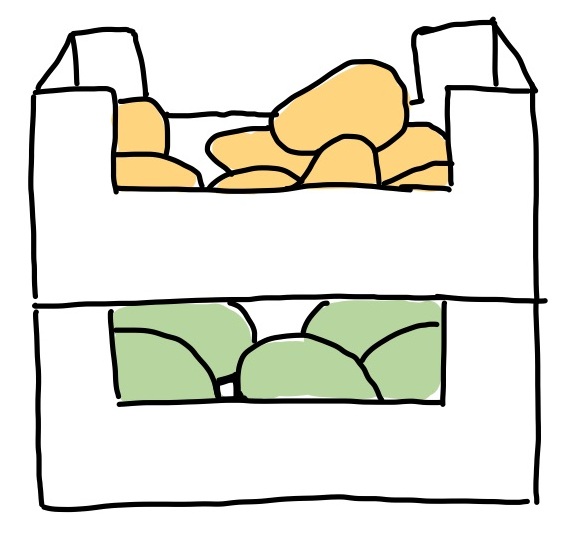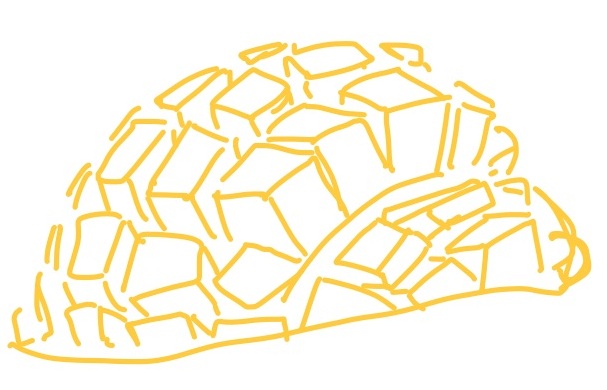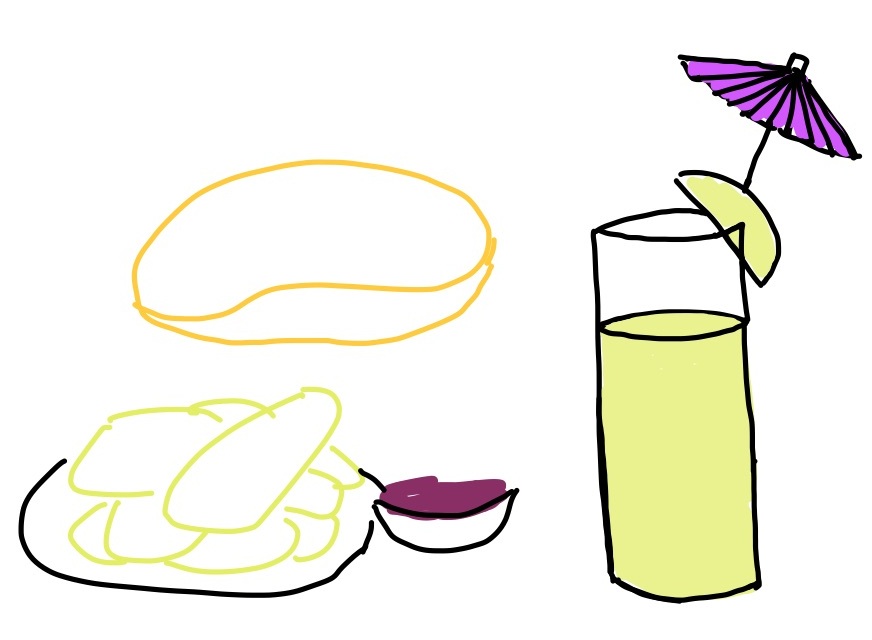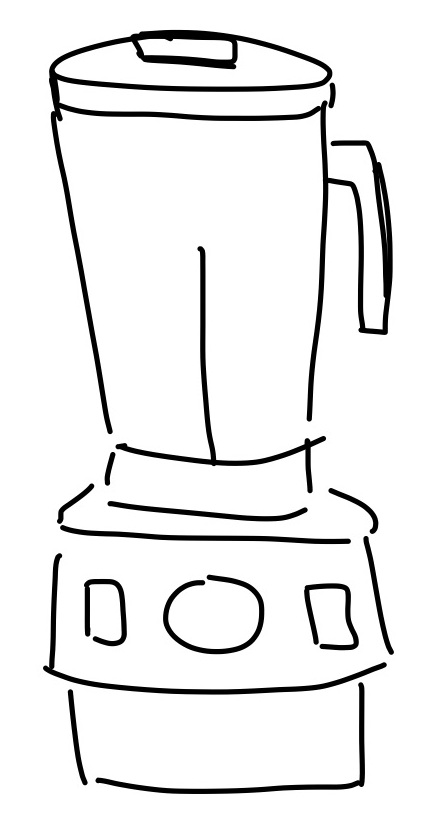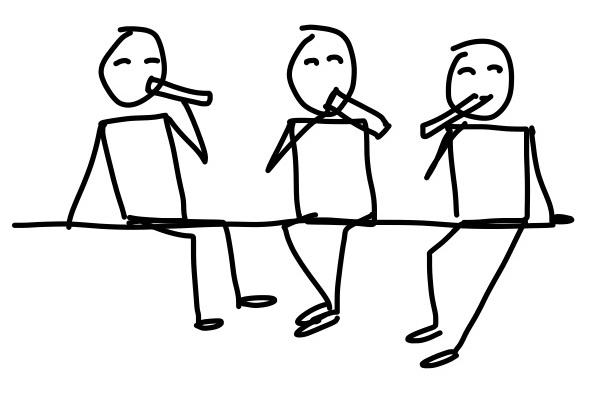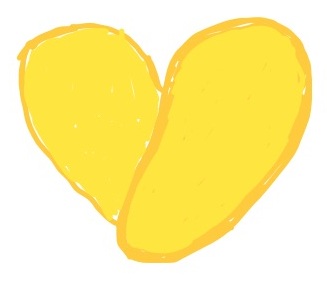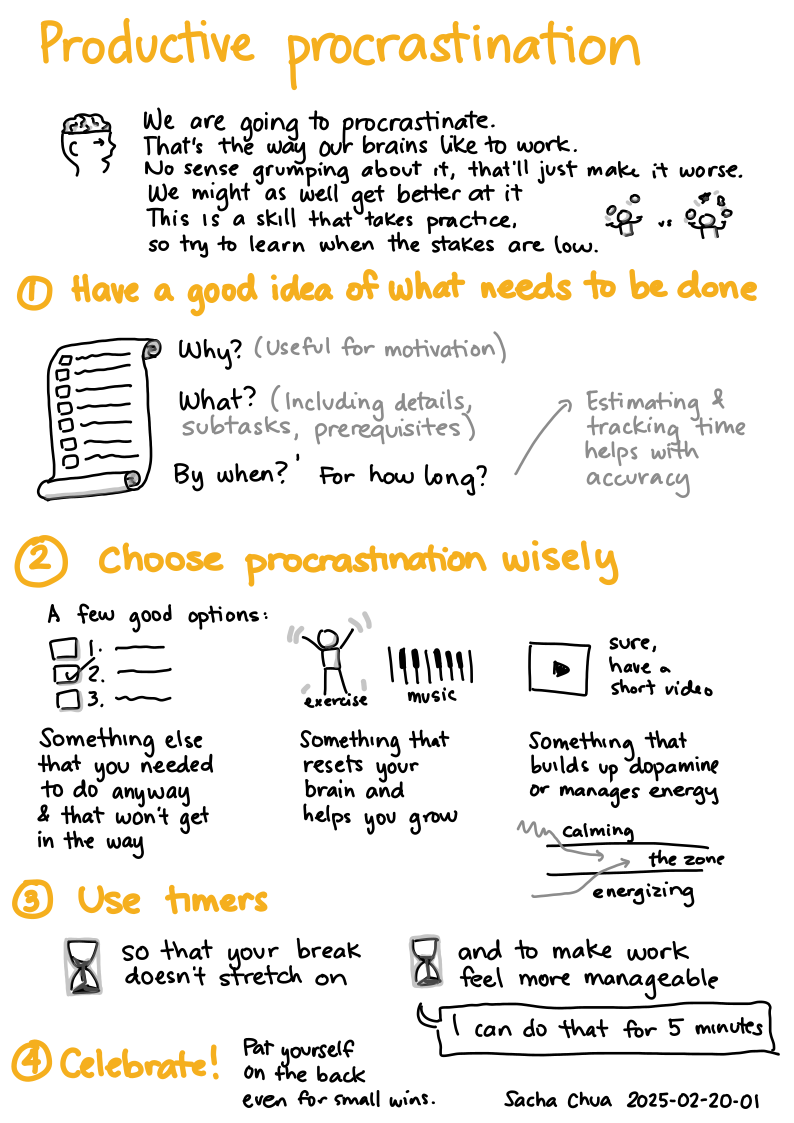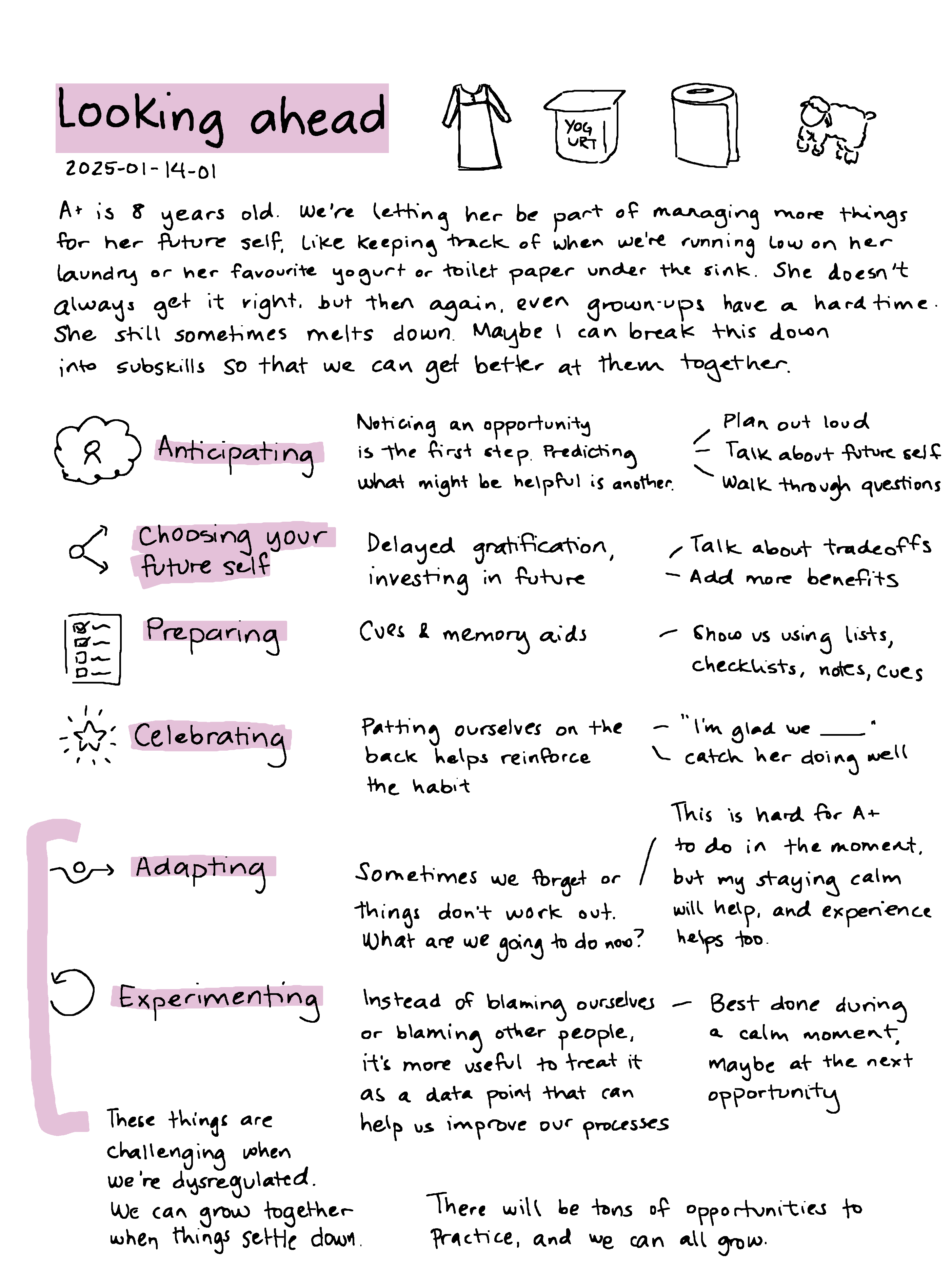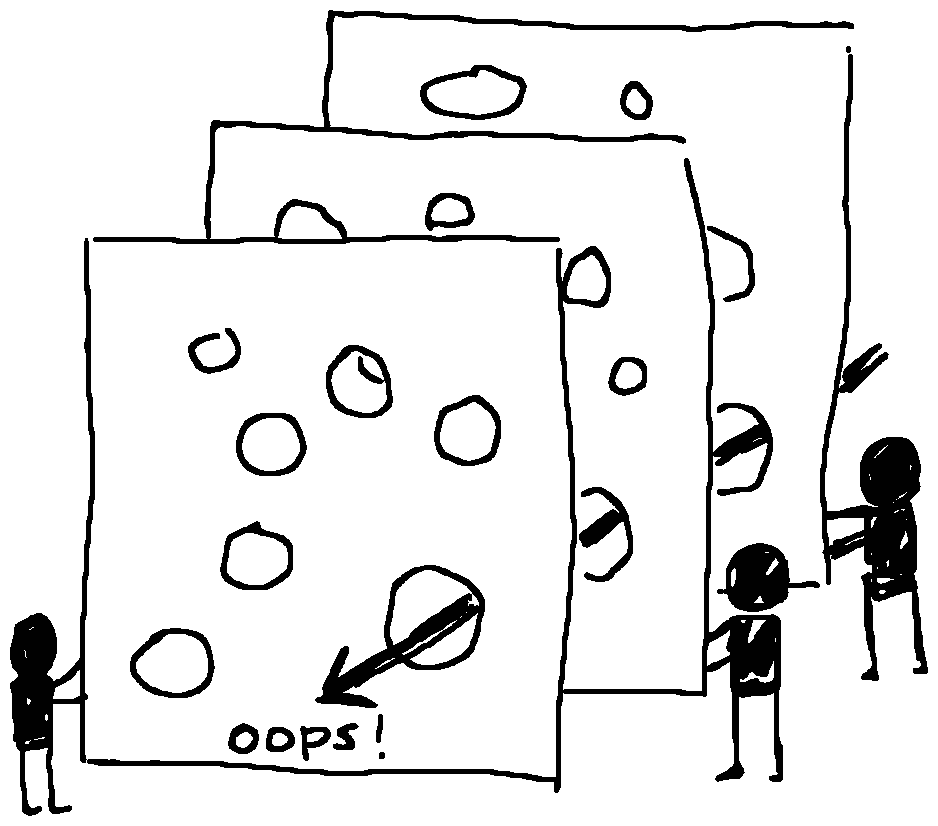My words will become her inner voice
| parentingTrawling through blogs to add to my feed reader, I came across a number of posts related to the February 2025 IndieWeb Carnival theme of affirmations. It nudged me to think about the words I rub into A+'s brain with repetition.
Once a year or so, A+'s virtual school teachers typically play a video about affirmations as part of the social-emotional learning aspect of the curriculum.1 The perky narrator exhorts the listeners to repeat the affirmations after her. A+ doesn't. I don't know if many of the other kids do.
The words I use with A+ are more powerful, so I want to be thoughtful about them. There's this idea floating around: the way we talk to our children becomes their inner voice.2
Here's what I find myself repeating:
- "You worked hard on that." I'm not 100% clear on the results of the meta-analyses of growth mindset research, but it makes sense to me to focus on acknowledging her effort rather than things that might be considered fixed characteristics. It's a good contrast to the "You're so smart!" that she might get from people impressed by her skills at solving Rubik's cubes or her enjoyment of math. She likes it when I see what she's doing, so I also add specific descriptions, and I extend it with a long-term perspective. Today she excitedly told me about how she worked together with a classmate on their literacy groupwork, so I echoed that back to her and connected it to her growth over time. I also often say "You did that!" and flesh it out with details.
- "You got this." Because it's important for her to feel my belief and trust in her, and to enjoy confidence and self-efficacy. She's been doing well with increased personal responsibility for things like homework. Sometimes I say "We got this" instead, when we're working together.
- "You know the way." Because it's extra fun (and extra effective) to sing the things I want her to remember, and because often she already knows the next thing she needs to do and this is a fun way of sending her off. This one is from the We Know the Way song from Moana. I like how I can use snippets of Disney musicals and bring in all the emotional storytelling connected to them. I occasionally touch on another line from that song: "We set a course to find a brand new island everywhere we roam." She's going to have to find a brand new way. She can do it. We're wayfinders.
- "I got you." Because sometimes she stumbles and falls, and that's okay. We're here. Sometimes all she needs is a snuggle. Sometimes she needs a bandage or an energy bar or an emergency frozen treat. Sometimes she needs an extra pair of hands or someone to brainstorm with. We can figure things out together.
- "You're wonderful." Because it's good for her to know I'm glad she exists, in a way that focuses on her wonderfulness rather than my act of loving her. Along these lines, I also frequently say, "You're awesome!"
- "It's your experiment!" Because trying things out will help her learn, and this reminds me to back off and let her decide.
Over dinner, I mentioned this list of things I often say to A+. She wanted me to add these ones:
- "I appreciate you, child."
- "I love you."
- "I'm going to pounce on you." Which is usually interrupted by her pouncing on me. This amuses her greatly. I like this playful way to offer a hug.
It is easiest to say these things when we're both well-rested and in good moods, so part of my job is to manage myself so that I can be in that state as often as possible.
A+'s beginning to echo these words back to us. She tells me what she'd like to use her allowance to experiment with. Yesterday at dinner, she told me, "You're awesome!" in the same way that I often tell her. Sometimes, as I send her off on her next task, she sings, "We know the way."
One night, as I was tucking A+ in, she asked for snuggles. I burrowed under the blankets and said, "I got you." She said, "You always do."
Footnotes
A1.3 Positive Motivation and Perseverance in Health and Physical Education (2019)
Hard to pin down a specific attribution. Goodreads has a page attributing this quote to Peggy O'Mara, but I can't find a citation. There are also plenty of variants on the Web, like this "The way we speak to our children becomes their inner voice" article from Kurtz Psychology. Anyway, handwaving this as a pithy concept I didn't come up with.

